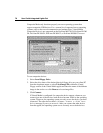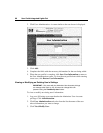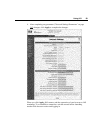
86 User Guide Integrated Lights-Out
Linux requires that the terminal be listed in the /etc/securetty file in order to
logon. Add the following line at the end of this file:
ttyS0
On some BL p-Class systems, the standard UART I/O address (0x3F8) is used
when there is no conflict. On these systems, the setserial command is not
required.
Linux End-to-End Support
The Virtual Serial Port, by default, uses the IO address 0x0408 and INTERRUPT
4 for communication. The Virtual Serial Port is configured and enabled when the
RBSU is selected and the Virtual Serial Port feature is enabled. This is a known
limitation of the Virtual Serial Port feature for Linux support, as this IO address
is not a standard supported IO address. The setserial command can be used
to configure agetty, but the kernel requires rebuilding to support LILO for
booting redirection and kernel redirection. Full configurability, to standard
UART IO addresses are provided in the 1.60 version of the iLO firmware, but a
compatible host system ROM must be used. If the compatible host system ROM
is available for the specific server, then the setserial command does not
need to be used, and LILO booting redirection will appear on the Virtual Serial
Port using the standard kernel.
Administration
The options available in the Administration tab enable you to manage user
settings, SNMP alerting through integration with Systems Insight Manager,
security settings, licensing, certificate administration, directory settings, and
network environment settings. This section also provides a firmware upgrade
option that enables you to keep iLO current.
User Administration
User Administration enables you to manage the user accounts stored locally in
the secure iLO memory. Directory user accounts are managed using MMC or
ConsoleOne snap-ins. Using the User Administration screen, you can add a new
user, view or modify an existing user's settings, or delete a user.


















